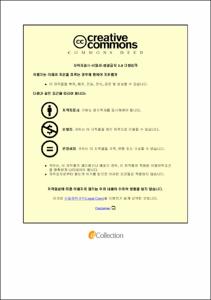비표지 프로테오믹스에 의해 밝혀진 위암의 질병의존 단백질과 융합 단백질
- Abstract
- 연구목적: 유전체학 연구와 비교하여 위암에 대한 프로테오믹스 연구는 대부분 신호전달 경로가 세포와 조직에서 발현되는 단백질에 의해 조절된다는 사실에도 불구하고 현재까지 활발히 수행되지 않았다. 본 연구에서는 한국인 위암 환자들의 프로테옴 분석을 시행하였다.
연구방법: 위암 조직에서만 발현되는 질병의존 단백질과 융합 단백질들을 확인하기 위해 9명 위암 환자의 위암 조직과 정상 조직을 이용하여 정량적인 비표지 프로테오믹스 분석을 시행했다. 또한, 생물 정보학 분석을 통해 질병의존 단백질 간의 상호 작용도 조사했다.
연구결과: 분석을 통해 9개의 위암 조직 중 적어도 5 이상에서 정상 조직과 비교하여 의미 있는 차이를 보이며 존재하는 72개의 발현이 증가된 단백질과 29개의 발현이 감소된 단백질을 확인하였다. 단백질들은 6개의 매우 상호 작용이 활발한 클러스터와 비슷한 세포학적, 분자의 기능은 공유하지만 지금까지 어떠한 상호 작용도 보고되지 않은 5개의 상대적으로 관련이 있는 그룹으로 나뉘어 졌다. 흥미롭게도, 이 클러스터와 그룹들은 몇몇 다른 암에 대한 치료제와 예후 예측 인자로 사용 중이었다. 위암 조직에서만 발현되고 정상 위 조직에서는 발현되지 않는 2개의 융합 단백질(Tropomyosin 4 [TPM4]-Anaplastic lymphoma receptor tyrosine kinase [ALK] and heterogeneous nuclear ribonucleoprotein A2/B1 [hnRNPA2B1]-Family with sequence similarity 96 member A [FAM96A])을 확인하였다. 단일 클론 TMP4 항체를 사용한 웨스터 블랏 분석은 위암 조직에만 고분자량의 TPM4 띠가 있는 것을 보여 주었다.
결론: 비표지 프로테오믹스 분석은 한국인의 위암이 융합 단백질들과 같은 새로운 결함을 제시하였을 뿐만 아니라, 다른 암과 종양 발생에서 비슷한 신호전달 특성을 공유하는 것을 보여 주었다. 이러한 단백질들에 대한 모델들을 만들어 내는 것은 가까운 미래에 한국의 위암의 알려지지 않은 병태생리학적 측면과 잠재적 치료법을 밝히는데 도움을 줄 수 있을 것이다.
|Background and Objectives: In contrast to genomic studies, proteomic studies on gastric cancer have not been intensively conducted to date, despite the fact that signal transduction pathways are mostly regulated by proteins expressed in cells and tissues. In this study, I performed proteomic profiling of gastric cancer in Korean patients.
Materials and methods: To identify differentially expressed proteins (DEPs) and fusion proteins that are only expressed in gastric cancer tissues, I performed a quantitative label-free proteomic analysis using 9 pairs of gastric cancer and normal stomach tissues. In addition, I investigated the interactions among DEPs by bioinformatics analysis.
Results: I identified 72 up- regulated and 29 down-regulated proteins in at least 5 out of 9 gastric cancer tissues compared with paired normal tissues. These proteins were divided into 6 highly interacting clusters and 5 relatively related groups for which no interactions have been reported to date but cellular and molecular functions may be shared. Interestingly, the clusters and groups harbored targets for cancer drugs and prognostic markers for several cancers. Furthermore, I identified 2 fusion proteins that were expressed only in gastric cancer tissues and not in normal gastric tissues: Tropomyosin 4 (TPM4)-Anaplastic lymphoma receptor tyrosine kinase (ALK) and heterogeneous nuclear ribonucleoprotein A2/B1 (hnRNPA2B1)-Family with sequence similarity 96 member A (FAM96A). Western blot analysis using monoclonal TMP4 antibodies, but not Tropomyosin 3 (TPM3) antibodies, showed that high-molecular-weight TPM4 bands were present in only in gastric cancer tissues.
Conclusion: Label-free proteomic analysis revealed that Korean gastric cancer showed tumorigenesis signaling characteristics shared with other cancers in addition to presenting novel defects such as fusion proteins. Generating models for these proteins could elucidate unknown pathophysiological aspects of Korean gastric cancers and potential therapies in the near future.
- Issued Date
- 2017
- Awarded Date
- 2018-02
- Type
- Dissertation
- Keyword
- 위신생물; 비표지 프로테오믹스; 질병의존 단백질; 융합 단백질
- Alternative Author(s)
- Hyun Lim
- Affiliation
- 울산대학교
- Department
- 일반대학원 의학과의학전공
- Advisor
- 정훈용
- Degree
- Doctor
- Publisher
- 울산대학교 일반대학원 의학과의학전공
- Language
- eng
- Rights
- 울산대학교 논문은 저작권에 의해 보호받습니다.
- Appears in Collections:
- Medicine > 2. Theses (Ph.D)
- 파일 목록
-
-
Download
 200000004542.pdf
기타 데이터 / 4.59 MB / Adobe PDF
200000004542.pdf
기타 데이터 / 4.59 MB / Adobe PDF
-
Items in Repository are protected by copyright, with all rights reserved, unless otherwise indicated.